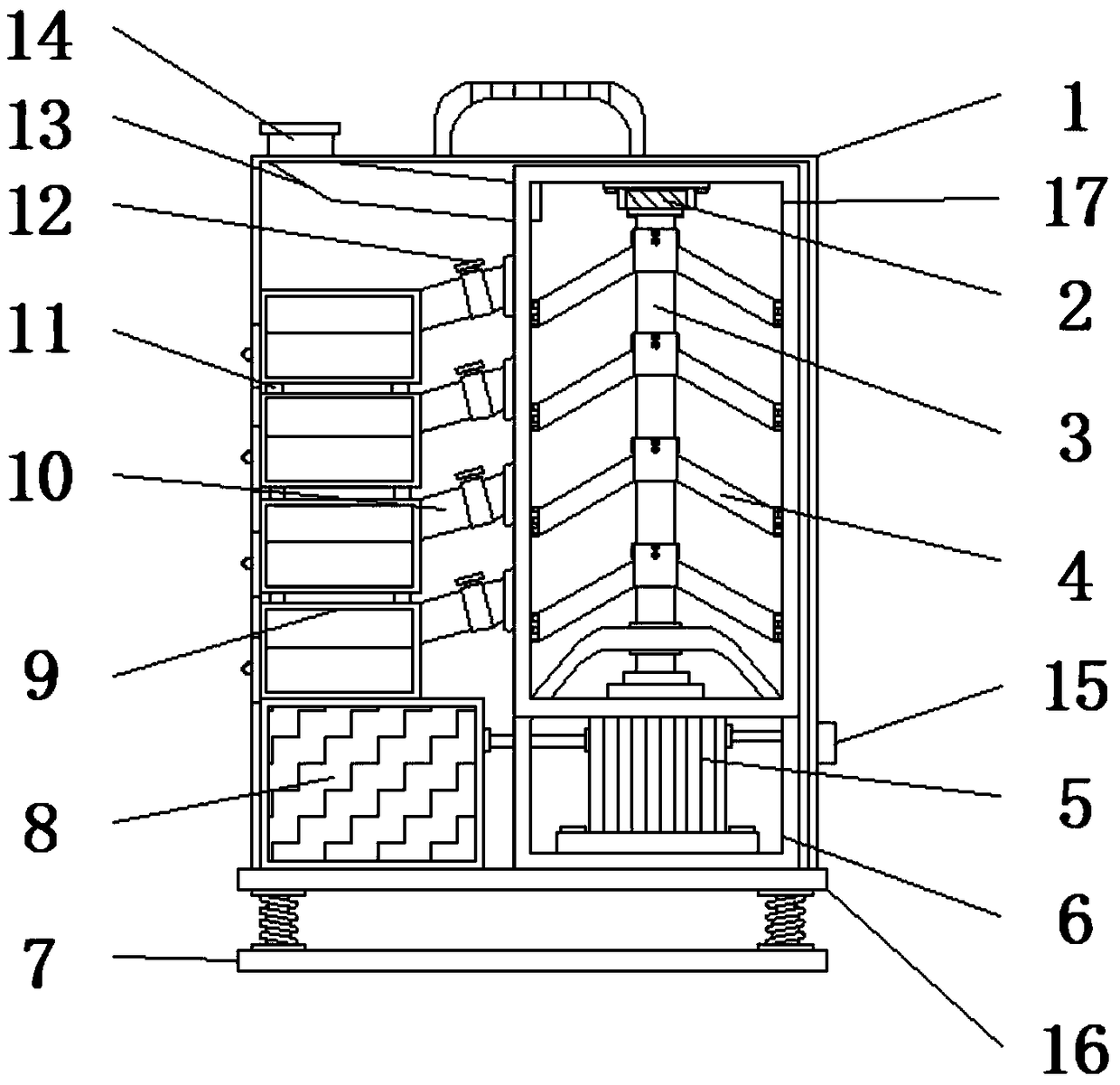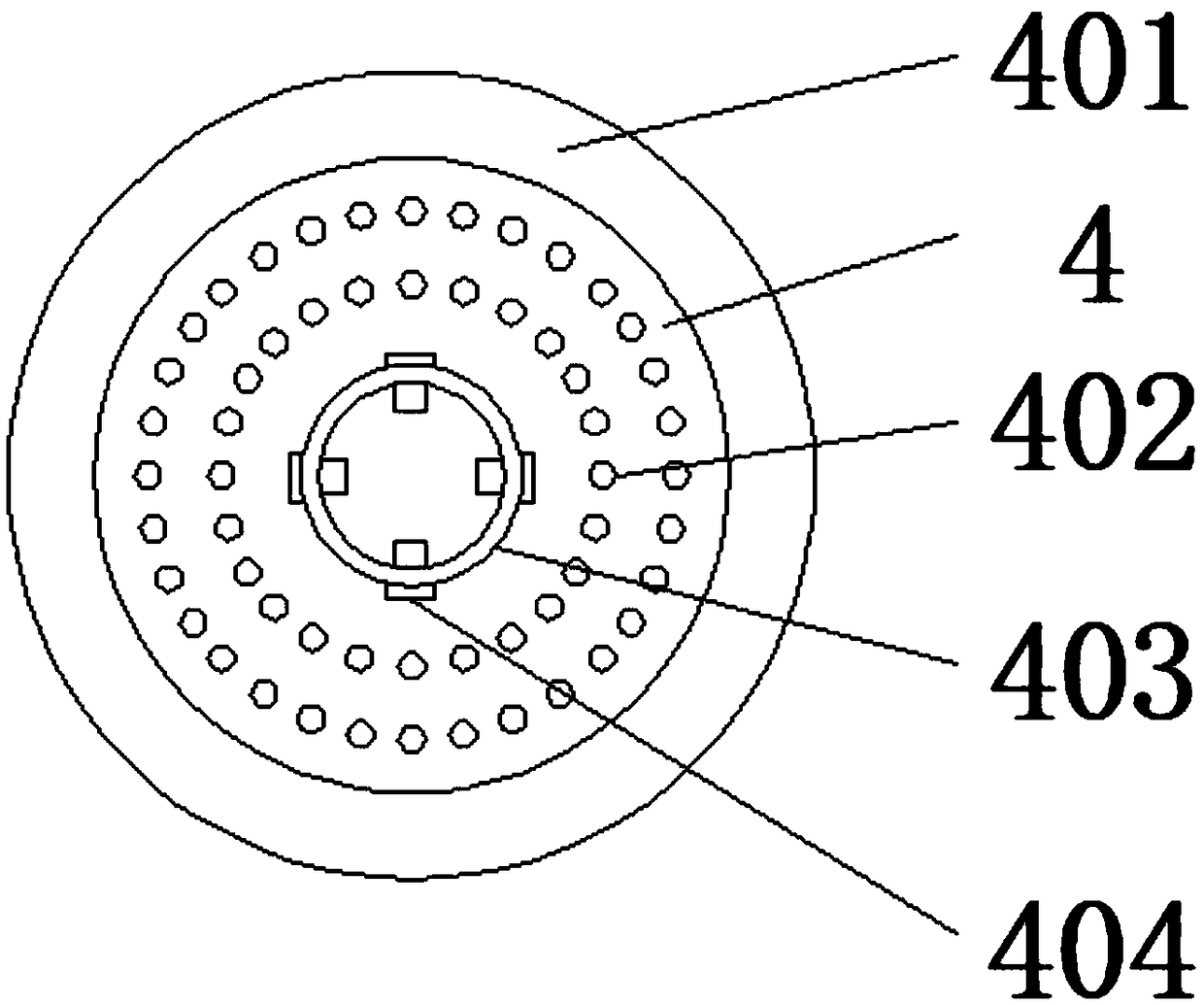Robot for medicine segregation for biological medical treatment
A biomedical and robotic technology, applied in solid separation, semi-permeable membrane separation, chemical instruments and methods, etc., can solve the problems of low work efficiency, long time-consuming manual separation, and unsatisfactory separation effect, and achieve the effect of avoiding shaking
- Summary
- Abstract
- Description
- Claims
- Application Information
AI Technical Summary
Problems solved by technology
Method used
Image
Examples
Embodiment 1
[0030] The preparation method of bionic oil-water separation membrane comprises the following steps:
[0031] Step 1, fully stirring montmorillonite and chitosan (dissolved in acetic acid solution with a mass concentration of 2%), and adding it to ammonia solution to obtain mixture 1;
[0032] Step 2, mixing sodium hydroxide, a ferrous chloride solution with a mass concentration of 72% and ethanol to obtain a mixture 2;
[0033] Step 3, mix mixture 1 and mixture 2 evenly, add to the reactor, keep warm at 270°C for 9 hours, cool, and set aside; the reactor is a hydrothermal reactor with polytetrafluoroethylene lining
[0034] Step 4, adding calcium chloride solution, heating to 100°C, and reacting for 12 minutes;
[0035] Step 5, heating to 137°C for evaporation, and finally forming a thin film at the bottom of the container;
[0036] Step 6, pressurizing the film to form a film with a thickness of 0.2-0.5mm.
Embodiment 2
[0038] The preparation method of bionic oil-water separation membrane comprises the following steps:
[0039] Step 1, fully stirring montmorillonite and chitosan (dissolved in acetic acid solution with a mass concentration of 2%), and adding it to ammonia solution to obtain mixture 1;
[0040] Step 2, sodium hydroxide, mass concentration is 70% ferrous chloride solution and ethanol are mixed, obtain mixture 2;
[0041] Step 3, mix mixture 1 and mixture 2 evenly, add to the reaction kettle, keep warm at 250°C for 7 hours, cool, and set aside; the reaction kettle is a hydrothermal reaction kettle with a polytetrafluoroethylene lining
[0042] Step 4, adding calcium chloride solution, heating to 60°C, and reacting for 10 minutes;
[0043] Step 5, heating to 140°C for evaporation, and finally forming a thin film at the bottom of the container;
[0044] Step 6, pressurizing the film to form a film with a thickness of 0.2-0.5mm.
Embodiment 3
[0046] The preparation method of bionic oil-water separation membrane comprises the following steps:
[0047] Step 1, fully stirring montmorillonite and chitosan (dissolved in acetic acid solution with a mass concentration of 2%), and adding it to ammonia solution to obtain mixture 1;
[0048] Step 2, mixing sodium hydroxide, a ferrous chloride solution with a mass concentration of 80% and ethanol to obtain a mixture 2;
[0049] Step 3, mix mixture 1 and mixture 2 evenly, add to the reaction kettle, keep warm at 280°C for 10 hours, cool, and set aside; the reaction kettle is a hydrothermal reaction kettle with a polytetrafluoroethylene lining
[0050] Step 4, adding calcium chloride solution, heating to 120°C, and reacting for 30 minutes;
[0051] Step 5, heating to 130°C for evaporation, and finally forming a thin film at the bottom of the container;
[0052] Step 6, pressurizing the film to form a film with a thickness of 0.2-0.5mm.
PUM
| Property | Measurement | Unit |
|---|---|---|
| thickness | aaaaa | aaaaa |
Abstract
Description
Claims
Application Information
 Login to View More
Login to View More - R&D
- Intellectual Property
- Life Sciences
- Materials
- Tech Scout
- Unparalleled Data Quality
- Higher Quality Content
- 60% Fewer Hallucinations
Browse by: Latest US Patents, China's latest patents, Technical Efficacy Thesaurus, Application Domain, Technology Topic, Popular Technical Reports.
© 2025 PatSnap. All rights reserved.Legal|Privacy policy|Modern Slavery Act Transparency Statement|Sitemap|About US| Contact US: help@patsnap.com



